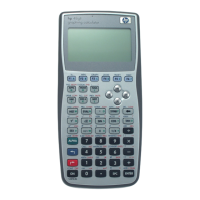5-26 Equation Reference
Example:
Given: T=16.85_°C, P=1_atm, V=25_1, MW=36_g/gmol.
Solution: n=1.0506_gmol, m=3.7820E-2_kg.
Ideal Gas State Change (5, 2)
Equation:
Pf Vf⋅
Tf
----------------
Pi Vi⋅
Ti
----------------
=
Example:
Given: Pi=1.5_kPa, Pf=1.5kPa, Vi=2_l, Ti=100_°C, Tf=373.15_K.
Solution: Vf=2_1.
Isothermal Expansion (5, 3)
These equations apply to an ideal gas.
Equations:
WnRTLN
Vf
Vi
------
⎝⎠
⎛⎞
⋅⋅⋅=mnMW⋅=
Example:
Given: Vi=2_l, Vf=125_l, T=300_°C, n=0.25_gmol, MW=64_g/gmol.
Solution: W=4926.4942_J, M=0.016_kg.
Polytropic Processes (5, 4)
These equations describe a reversible pressure-volume change of an ideal gas such that P
∗
V
n
is constant.
Special cases include isothermal processes (n=1), isentropic processes (n=k, the specific heat ratio), and
constant-pressure processes (n=0).
Equations:
Pf
Pi
-----
Vf
Vi
------
⎝⎠
⎛⎞
n–
=
Tf
Ti
------
Pf
Pi
-----
⎝⎠
⎛⎞
n1–
n
------------
=
Example:
Given: Pi=15_psi, Pf=35_psi, Vi=1_ft^3, Vf=0.50_ft^3, Ti=75_°F.
Solution: n=1.2224, Tf=164.1117_°F.
Isentropic Flow (5, 5)
The calculation differs at velocities below and above Mach 1. The Mach number is based on the speed of sound
in the compressible fluid.

